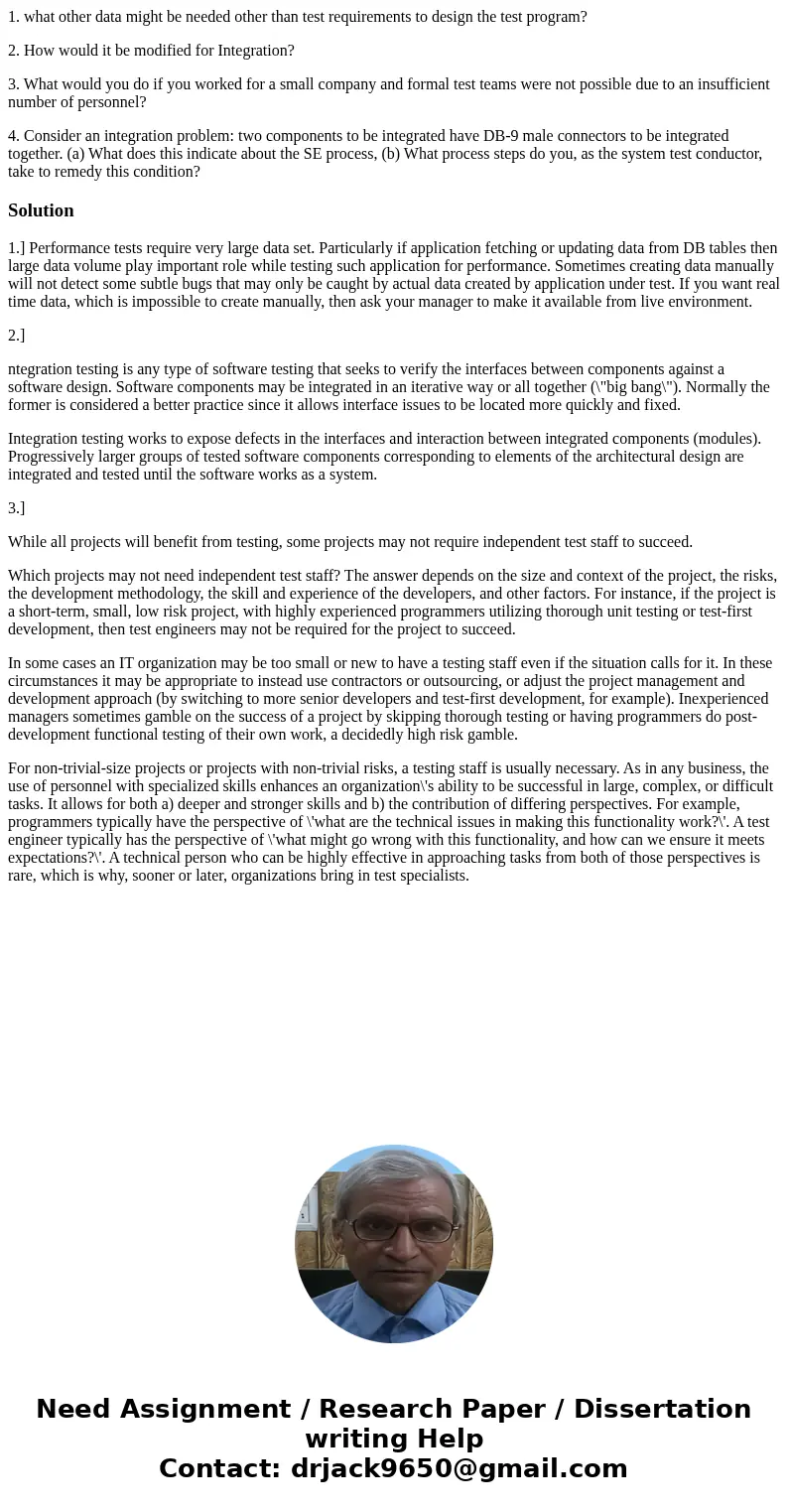1 what other data might be needed other than test requiremen
1. what other data might be needed other than test requirements to design the test program?
2. How would it be modified for Integration?
3. What would you do if you worked for a small company and formal test teams were not possible due to an insufficient number of personnel?
4. Consider an integration problem: two components to be integrated have DB-9 male connectors to be integrated together. (a) What does this indicate about the SE process, (b) What process steps do you, as the system test conductor, take to remedy this condition?
Solution
1.] Performance tests require very large data set. Particularly if application fetching or updating data from DB tables then large data volume play important role while testing such application for performance. Sometimes creating data manually will not detect some subtle bugs that may only be caught by actual data created by application under test. If you want real time data, which is impossible to create manually, then ask your manager to make it available from live environment.
2.]
ntegration testing is any type of software testing that seeks to verify the interfaces between components against a software design. Software components may be integrated in an iterative way or all together (\"big bang\"). Normally the former is considered a better practice since it allows interface issues to be located more quickly and fixed.
Integration testing works to expose defects in the interfaces and interaction between integrated components (modules). Progressively larger groups of tested software components corresponding to elements of the architectural design are integrated and tested until the software works as a system.
3.]
While all projects will benefit from testing, some projects may not require independent test staff to succeed.
Which projects may not need independent test staff? The answer depends on the size and context of the project, the risks, the development methodology, the skill and experience of the developers, and other factors. For instance, if the project is a short-term, small, low risk project, with highly experienced programmers utilizing thorough unit testing or test-first development, then test engineers may not be required for the project to succeed.
In some cases an IT organization may be too small or new to have a testing staff even if the situation calls for it. In these circumstances it may be appropriate to instead use contractors or outsourcing, or adjust the project management and development approach (by switching to more senior developers and test-first development, for example). Inexperienced managers sometimes gamble on the success of a project by skipping thorough testing or having programmers do post-development functional testing of their own work, a decidedly high risk gamble.
For non-trivial-size projects or projects with non-trivial risks, a testing staff is usually necessary. As in any business, the use of personnel with specialized skills enhances an organization\'s ability to be successful in large, complex, or difficult tasks. It allows for both a) deeper and stronger skills and b) the contribution of differing perspectives. For example, programmers typically have the perspective of \'what are the technical issues in making this functionality work?\'. A test engineer typically has the perspective of \'what might go wrong with this functionality, and how can we ensure it meets expectations?\'. A technical person who can be highly effective in approaching tasks from both of those perspectives is rare, which is why, sooner or later, organizations bring in test specialists.

 Homework Sourse
Homework Sourse